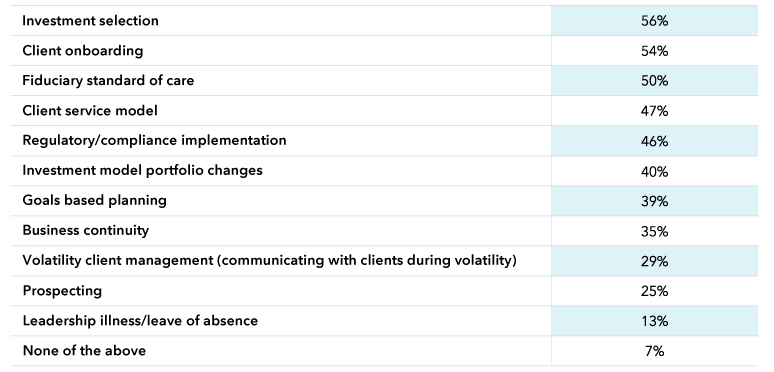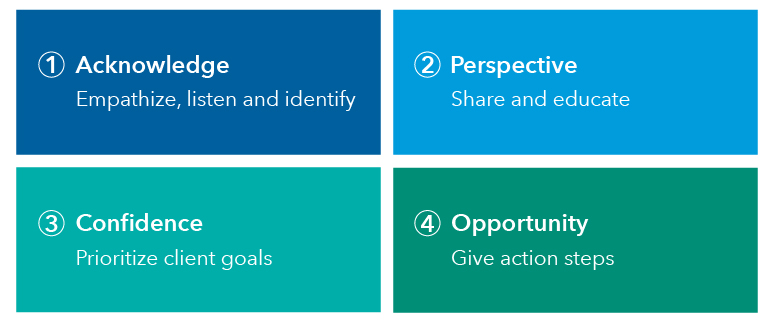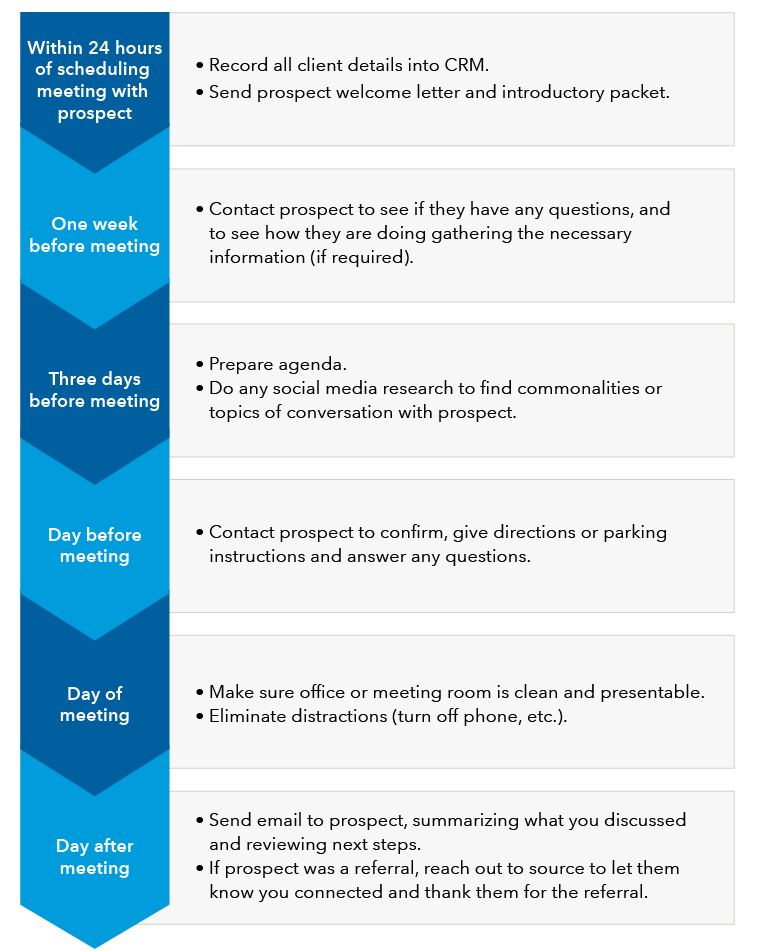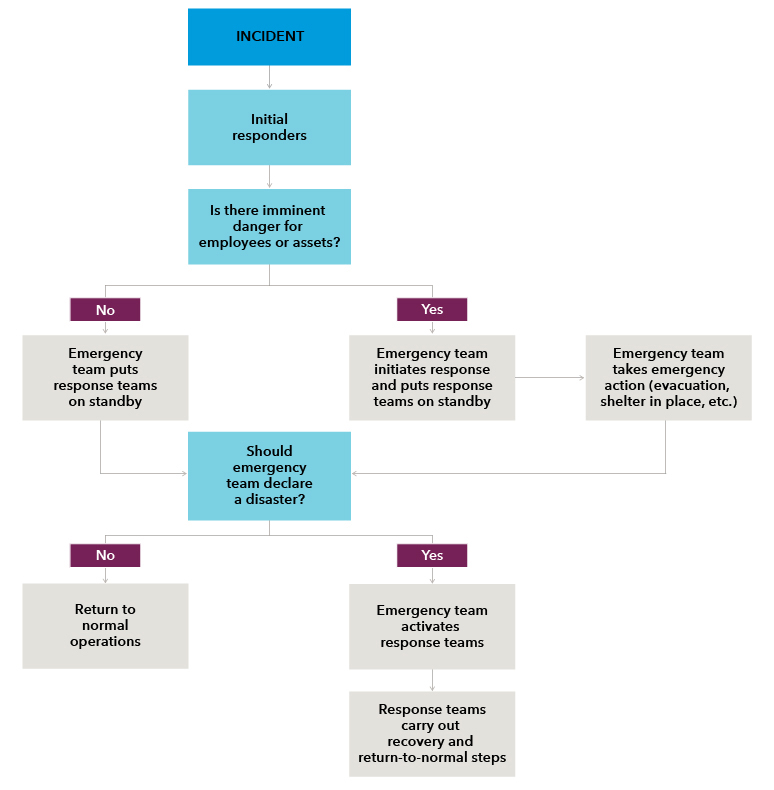Planning & Productivity
8 MIN ARTICLE
For advisor use only. Not for use with investors.
It’s Monday morning, and you just got to the office. You head over to the coffee maker, take a mug from the cabinet and pour. You get the sugar and creamer from the labeled drawer. You grab a stirrer from the container next to the pot. You take a sip and head to your desk, ready to start the day.
Grabbing that morning cup of coffee is a process you probably take for granted. You understand the steps to take, and you get the same results almost every time. But what if you were part of a large team sharing coffee duties? Would everyone know where to find the coffee maker? How much sugar and cream does everyone want? And where are those stirrers again?
A standard operating procedure (SOP) can help. Having a set of clear directions for important tasks in a business can save you and your employees time, money and stress. You can use them to share institutional knowledge, keep operations consistent, establish best practices and delegate responsibility to a larger team. SOPs can govern not only daily activities, but also responses to occasional scenarios in which a playbook is especially useful, such as volatile markets. And, just like coffee, SOPs can help boost the efficiency of your practice. In fact, our Pathways to Growth: 2024 Advisor Benchmark Study found that practices using SOPs for prospecting and onboarding achieved higher growth.
Ready to implement SOPs to help create a more efficient practice and more consistent service for your clients? Here’s how to get started.
What is an SOP and why is it useful?
An SOP is a set of clear, written steps to complete routine but important tasks in business. More than just a checklist, effective SOPs offer specifics on what needs to happen in order to reach a desired outcome. You may need to do certain steps in order, or the steps and sequence may vary depending on circumstances.
For instance, an SOP may also include emergency scenarios, when staff is least familiar with important steps to take. Similar to planning lists used in medicine, manufacturing and the military, SOPs can be used to ensure all the steps are completed and to keep a team motivated knowing exactly what to do next.
For financial professionals, SOPs offer a way to share essential components of the planning or client service process with other members of your team. This is crucial for advisors looking to serve more clients at scale. As Ray Evans, CFP, AIF of Pegasus Capital Management in Overland Park, Kansas, told us, “Did we have a process for most things? Yes. Did everybody know it besides me? No. So much of our practice was in my head and in my director of operation's head. And we needed to document everything.”
How to start creating SOPs
It’s important to determine which of your operations need SOPs. Business practices that need SOPs are often routine, complex enough that they warrant instructions (for example, more than three steps) and at the core of your business. They can include activities such as portfolio transactions, client communications or market alerts.
Industry-standard SOPs
A substantial number of advisors in our benchmark study have established standard operating procedures in place in their practices.

Source: Capital Group, Pathways to Growth: 2021 Advisor Benchmark Study
Among the 1,508 U.S. advisors surveyed in our Pathways to Growth: Advisor Benchmark Study, more than half are using established SOPs for investment selection, client onboarding and fiduciary standard of care. Client service model SOPs were in place for 47% of advisors, and 25% were using SOPs for prospecting.
Start with the W questions
Whatever the procedure, when you’re creating an SOP, start with the W questions: When, Who, Where, Why and What.
- When do we do this task? Understand where the task falls in the larger ecosystem/operations of your business.
- Where do we keep the information? Make sure you know where to find what you need, whether it’s kept as a hard copy, saved on your computer or archived in a database.
- Who completes this task? The answer may be a specific person, or the task may require more than one role.
- Why do you do this task? Think about the reason this task is important, whether it’s a step in a much larger process (like client onboarding) or exists in a vacuum (like business continuity in an emergency).
- What is your desired outcome of this task? Remind yourself of the larger goal of your task. For example, you may have a goal like increasing the number of clients, building awareness of your brand or ensuring that your office keeps up with technology.
Document everything
If you’ve answered the questions above, you’re ready to get it all down on paper. Record every step of the process in as much detail as you can. You can always refine later, but you don’t want to miss anything at this stage. Remember to write clearly and simply, because an employee needs to be able to follow this process from the documentation alone.
Pick a format
Once you know all the steps for your SOP, you’re ready to pick a format. The steps on some of your operations may need to be done in order, some may be very complex, and still others may involve a decision-making process.*
If you’re working with a customer relationship management (CRM) system, you will most likely be able to set up events, processes and workflows there. Once you enter the information, a CRM can automatically schedule tasks for the person or people on your team who are responsible for completing the process.**
Communicating your SOP
The basic formats for SOPs are step-by-step instructions, hierarchical processes and flow charts. Here are some examples of how each type of format might be used in your practice.
Step-by-step instructions
A step-by-step format is useful if the process is relatively straightforward, for instance, if it has fewer than nine steps and requires no decision-making.
For example, one of the most difficult aspects of an advisor’s job is managing clients’ expectations during market volatility, keeping them from acting on instincts that may get in the way of their real-life financial goals. A step-by-step framework for crucial conversations guide you through these difficult discussions and make them more productive.
Client conversation framework

Source: Capital Group
With each step there is a distinct goal that builds upon the step before it. First, listen and acknowledge where the client stands. Second, add perspective by providing an informed take on the situation. Third, build confidence by reminding the client of the progress that has been made toward their financial goals. Finally, fourth, share opportunities to help the client move from uncertainty to action.
Hierarchical process
A hierarchical format is similar to a step-by-step format as it’s best for a process that requires no decision-making. This format uses a top-down approach that helps you break down a more complex process involving more steps or sub-steps in the process.
Client prospecting procedure checklist

For example, a client prospecting process may require a hierarchical SOP to document the many sub-tasks involved at each stage of the process.
Flow chart
Emergency response flow chart

Source: KingsBridge BCP
Flow charts work well when you need to make decisions. Whether the process is simple or complex, a flow chart will run you through various scenarios so that you best complete the tasks in a particular situation.
Once you have your SOPs in place, schedule regular updates to include new information or changes in your processes. Even though they may take some time upfront, SOPs will save you time and mental energy over the long run. Effective SOPs can make your business run more smoothly and give you time to focus on what matters to you most: helping your clients reach their financial goals.
*Source: “Standard Operating Procedure: What You Need To Know About SOPs,” Trainual.
**Source: “How To Create Good Financial Advisor Workflows and Processes,” Kitces.com.
Related content
-
Client Relationship & Service
-
Client Conversations
